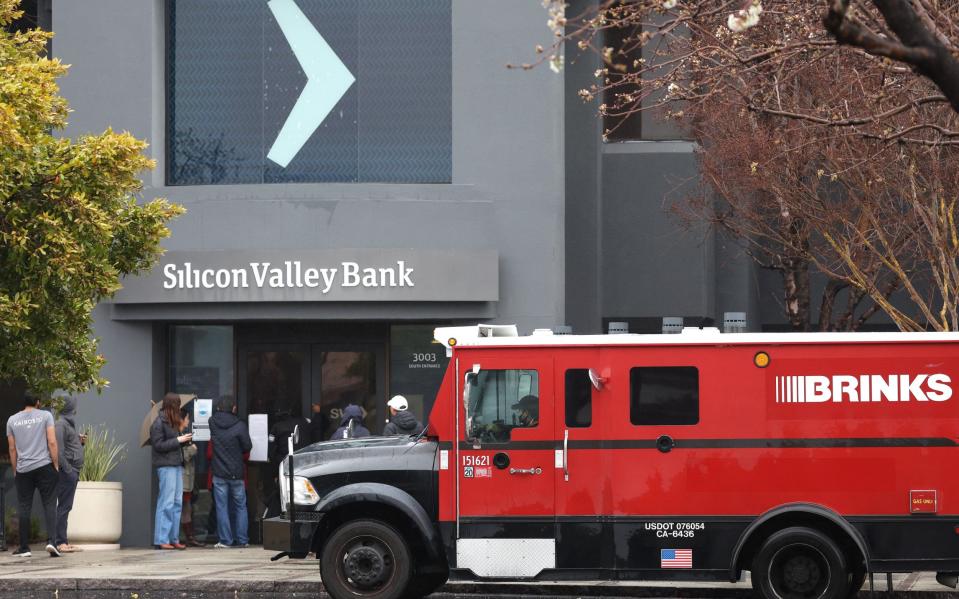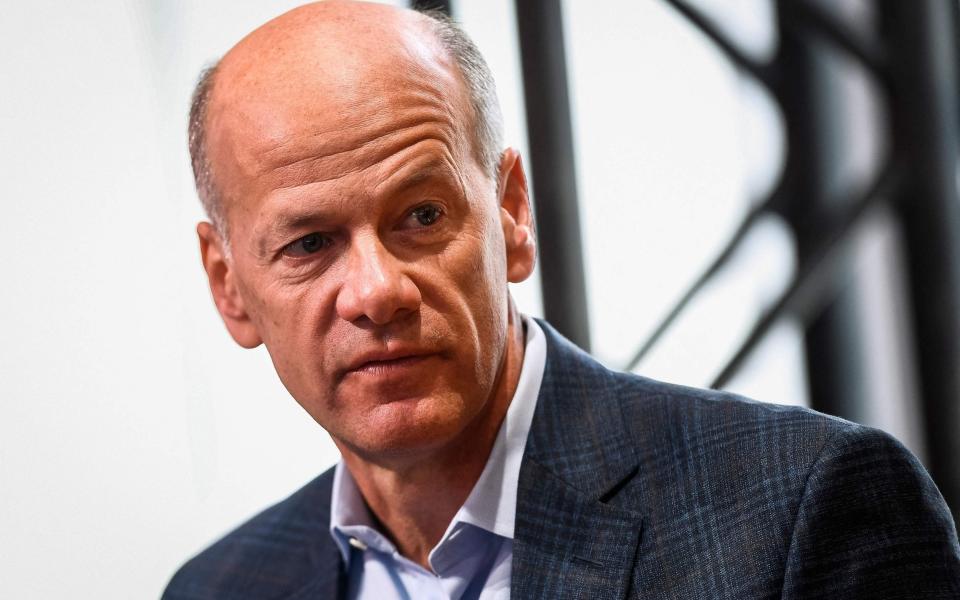Inside Silicon Valley Bank’s collapse as chief begged tech giants not to panic

When on the brink of a crisis, it is rarely good advice to plead with people not to panic. But that is precisely what Greg Becker did.
“My ask is to stay calm because that’s what is important,” the chief executive of Silicon Valley Bank told tech industry bosses in a private phone call on Thursday.
“We have been long-term supporters of you – the last thing we need you to do is panic.”
The plea did not have the intended effect. Silicon Valley Bank, the lender to the artificial intelligence start-ups and fintech giants of the San Francisco Bay Area, fell victim to a very analogue phenomenon: the bank run.
On Friday, US regulators seized control of the California lender in the biggest banking collapse since the 2008 crisis. Shares had already been suspended, a day after falling 60pc as venture capitalists told start-ups to pull their deposits.
Hours later, the Bank of England took control of Silicon Valley Bank’s UK arm, kicking off a whirlwind weekend of negotiations that resulted in HSBC acquiring the UK bank by Monday morning.
There are now fears that the crisis could spread into different parts of the banking sector. On Saturday, customers lined up outside America’s First Republic Bank, and on Monday, shares in the lender fell 60pc in pre-market trading.

Shares in Wall Street giants JP Morgan, Citigroup and Bank of America slumped, and fears spread to European lenders, with HSBC, Barclays and Standard Chartered falling on Friday morning. On Monday, the FTSE 100 fell by more than 2pc with bank shares suffering heavy losses.
Silicon Valley Bank executives abandoned plans to raise funds in a desperate attempt to patch up its balance sheet on Friday and instead began talks on a fire sale.
Start-up founders and investors were frantically assessing their exposure to the bank.
Venture capital firm Hustle Fund, in an email titled “urgent announcement for SVB clients”, said that they “do not want to create panic”, but advised companies which other banks they could switch to, offering to provide introductions.
Techies are used to boom and bust, but their favourite bank has been defined by its reliability.
Silicon Valley Bank was founded in 1982 when Wells Fargo bankers Roger Smith and Bill Biggerstaff, along with Stanford professor Bob Medearis, saw an opportunity to serve the growing crop of technology companies in Northern California, many of which felt misunderstood by traditional bankers.
Meadearis convinced his poker buddies to provide some of the initial investment in the bank, and early customers such as Cisco gave it a toehold in the market.
Unlike many other Californian finance businesses, Silicon Valley Bank was not in the business of investing.
While venture capitalists and start-ups made and lost billions in the tech bubble and crash, the bank was in the more sober business of holding deposits and making loans. It expanded gradually and carefully, opening a London branch in 2004 and spreading across Europe and Asia in addition to its US base.
The company bills itself as the “only bank dedicated to the innovation sector around the world”. Becker, its chief executive, has also been a constant, joining the bank in 1993 and becoming chief executive in 2011.
“They’ve been a champion to start-ups,” says Haakon Overli, an investor at Dawn Capital.
The bank’s crisis began from a position of strength. In 2020, as working from home and lockdowns made businesses and households more reliant than ever on tech, investors poured money into start-ups, which in turn put the money with the bank.
Deposits grew from $62bn in 2019 to $173bn at the end of last year.
The bank was unable to lend out these funds at the same frantic pace with which they came in. Instead, the company invested in long-term debt securities related to government bonds and US mortgages. It was a smart move in an era of rock-bottom returns, but as central banks began to raise interest rates, the value of the bank’s investments slumped.
On Wednesday, it announced that it had taken a hefty loss on the sale of the bonds this year and planned to sell $2.25bn in shares to cover the deficit.
That might have been it. But the timing could not have been worse. On Thursday the US bank Silvergate, a specialist cryptocurrency lender, collapsed after failing to recover from its exposure to the bust crypto platform FTX.
That raised nerves about bank exposure to the tech industry.
Becker’s appeals for calm fell on deaf ears. Founders Fund, the venture capital investor founded by influential investor Peter Thiel, advised companies to pull their deposits, saying there was no downside.
Others, such as Union Square Ventures and Bessemer Venture Partners, did the same.

“It’s a prisoners’ dilemma,” said one investor, saying that while there was a collective trust in the bank, no company wanted to be the only one not to take their money out and left bearing losses.
One venture capitalist said that the close-knit nature of the Silicon Valley community meant there was a greater risk of companies withdrawing money in sync.
“Clearly Silicon Valley Bank is not diversified; their customers are very concentrated, they have the same business models and the same communication channels, and share the same VCs invested in each other. It helps on the way up but the effect can also reverse.”
The crisis spread to Britain on Friday, despite assurances from UK executives that the British branch was ringfenced and a separately capitalised entity, with its own assets and management.
“Silicon Valley Bank UK is a standalone entity with its own balance sheet and governance structure,” said Erin Platts, the chief executive of Silicon Valley Bank UK.
“We have been so humbled with the consistent drum of support coming from our UK investor and founder community in the last few days. We appreciate that this is a concerning time for our clients so we are working tirelessly to support them and give more context.”
However, late on Friday, the Bank of England seized Silicon Valley Bank UK, saying it planned to put the bank into insolvency proceedings on Sunday night. Amid frantic lobbying from the tech industry, the Treasury intervened, reaching a deal with HSBC before markets opened on Monday.
No white knight has emerged for the US business, with the government instead promising to make sure that deposit holders do not lose out. If the panic spreads beyond Silicon Valley Bank itself, that could prove expensive.

